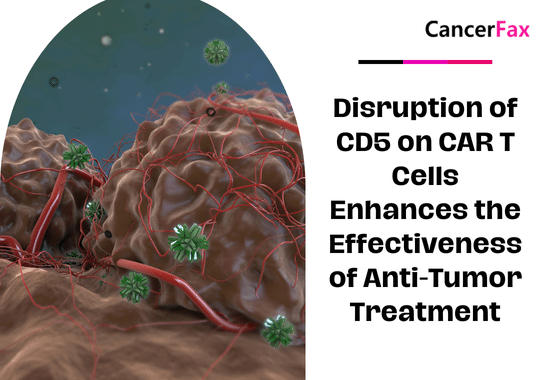The concept of oligometastasis was proposed by Hellman in 1995. He pointed out that the lesion refers to some intermediate states between the localized growth of the tumor and systemic metastasis. Oligometastasis is organ-specific, but still does not have the ability to metastasize. It is at an early stage of tumor metastasis. The number and location of metastases Is limited. For these oligometastases, local treatment can be used to achieve disease control. Hellman believes that the state of oligometastasis may be related to tumor type, “seed cell” dissemination ability, stage and restriction ability of metastasis target organs.
There is no unified definition of the concept of oligometastasis. At present, oligometastasis is considered to be an intermediate state. Under this state, active and effective local treatment can achieve the purpose of disease control. The European Society of Medical Oncology (ESMO) 2016 consensus guidelines for the management of patients with metastatic colorectal cancer defined oligometastatic disease (OMD) as a disease state with ≤2 metastatic sites and ≤5 total metastases. There are three main types of oligometastasis in metastatic colorectal cancer (mCRC): simultaneous oligometastasis coexisting with the primary foci, metachronous oligometastasis that occurs after the primary foci are controlled, and induction after systemic system therapy Widow transfer. These three types of treatment may be different, and more clinical research and data are needed to explain.
Possible mechanism and characteristics of oligotransfer
The possible mechanism of oligotransfer is not fully understood. At present, there are two hypotheses about the development of tumors from local growth to systemic metastasis. Hypothesis 1 is “determination of the fate of the primary tumor”. This hypothesis believes that oligometastasis and multiple metastases may be different metastatic phenotypes. These two metastatic phenotypes are determined by different tumor clone populations, and their metastatic potentials are different. ; Hypothesis 2 is “progress from oligo to multi-metastasis”. This hypothesis holds that oligo-metastasis is an intermediate state of the disease. From oligo-metastasis to multiple metastases is a continuous process in which genetic changes play an important Regulation, but its in-depth mechanism needs further study.
Different hypotheses may determine different treatment methods for tumors. According to Hypothesis 1, local treatment may have a greater weight, and healing is the goal to be pursued. According to Hypothesis 2, systemic therapy has a greater weight and pursues the overall survival (OS). Benefit, treatment options are more gentle and less invasive. At present, they tend to prefer hypothesis two, but hypothesis one also has its reason. Looking forward to further explanations in the follow-up study. Some researchers have found that oligotransferring may be related to the blocking of microRNA.
The ESMO consensus guidelines recommend that the treatment endpoint of oligometastasis is a tumor-free state (NED); the principles of treatment include systemic treatment and local treatment (including surgery), and the core of treatment is the best perioperative treatment plan. The guideline emphasizes the importance of “locally destructive treatment” (LAT) in the treatment of oligometastasis. The local non-surgical treatments used include ablation, transhepatic artery treatment, and radiation therapy.
Surgical treatment of oligometastasis of colorectal cancer
Surgical treatment is the most commonly considered treatment method for oligometastasis of colorectal cancer (Table 1). Regardless of liver oligometastasis and lung oligometastasis, surgical treatment can produce significant OS benefits. Poor prognostic factors after hepatic oligometastasis include positive lymph nodes, elevated carcinoembryonic antigen (CEA) levels, tumor diameters greater than 10 cm, and positive margins. Factors related to the prognosis of lung oligometastasis include: CEA ≥5 ng / ml, tumor free interval (DFI) <36 months, number of lesions> 1, etc.
For oligometastasis of para-aortic lymph node (PALND) in colorectal cancer, if surgical resection is performed, OS can be benefited from less resection. The benefits of preventive dissection of oligometastasis in the pelvic side of rectal cancer are unclear. Bone oligometastasis is more radiotherapy, but for oligometastasis with spinal cord compression symptoms, the benefits of surgical treatment can still be seen. The benefit of surgery combined with radiotherapy for brain oligometastasis is more obvious. If the ovarian oligometastasis is spread by serum, it is consistent with Hypothesis 1, and surgery is a better choice for these patients.
Colorectal cancer oligometastasis radiotherapy
At present, surgery is the first choice for oligometastasis, but more thought is also needed, such as the source of oligometastasis and treatment goals. Different primary foci and oligometastasis in different parts of the same primary foci also have the targeting of some organs. They have specific sensitivity to different treatments, and surgery is not a treatment method.
With the update of technology, we also have other treatments, such as radiotherapy, radiofrequency ablation, etc. For some oligometastasis, we need to consider giving patients minimal damage. Stereotactic radiotherapy (SBRT) can bring certain survival benefits for liver metastases and lung metastases. High-throughput SBRT has unique advantages over perioperative and postoperative complications over surgical treatment. Therefore, radiotherapy is also a good treatment option for oligometastasis (Table 2). Although the current data is limited, with the further understanding of the mechanism of oligometastasis, radiotherapy may also replace surgical treatment.
Radiofrequency ablation for oligometastasis of colorectal cancer
For some small lesions with radio frequency ablation, whether it is liver metastasis or lung metastasis, radiofrequency ablation has shown a beneficial effect compared with surgical treatment.
The overall idea of oligotransfer therapy
In short, the treatment of colorectal cancer oligometastasis needs to be fully evaluated by a multidisciplinary team (MDT), and the patients with oligometastasis status should be screened by means of precise examination and clinical features. Systematic (systemic) treatment is the basis, and local treatment should be considered on the basis of effective systemic treatment. At the same time, under the premise of local treatment for radical resection (R0) or NED, the damage of local treatment is minimized.

